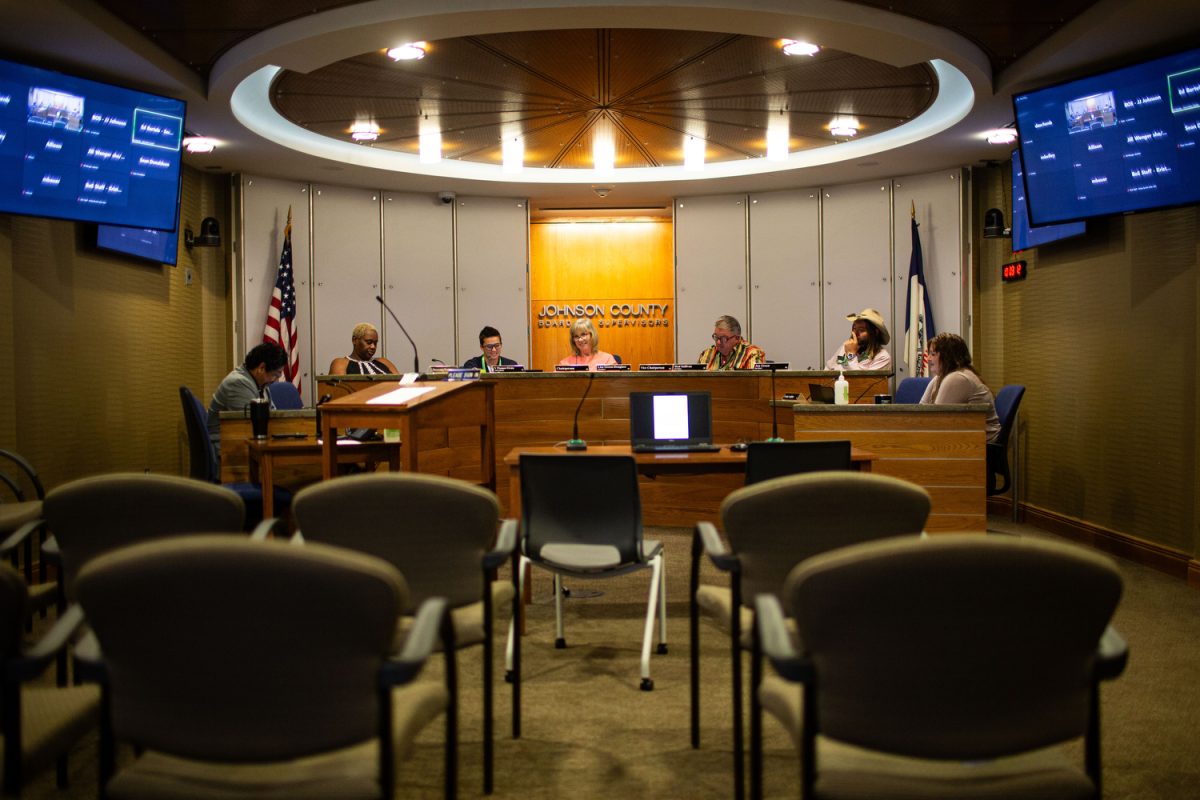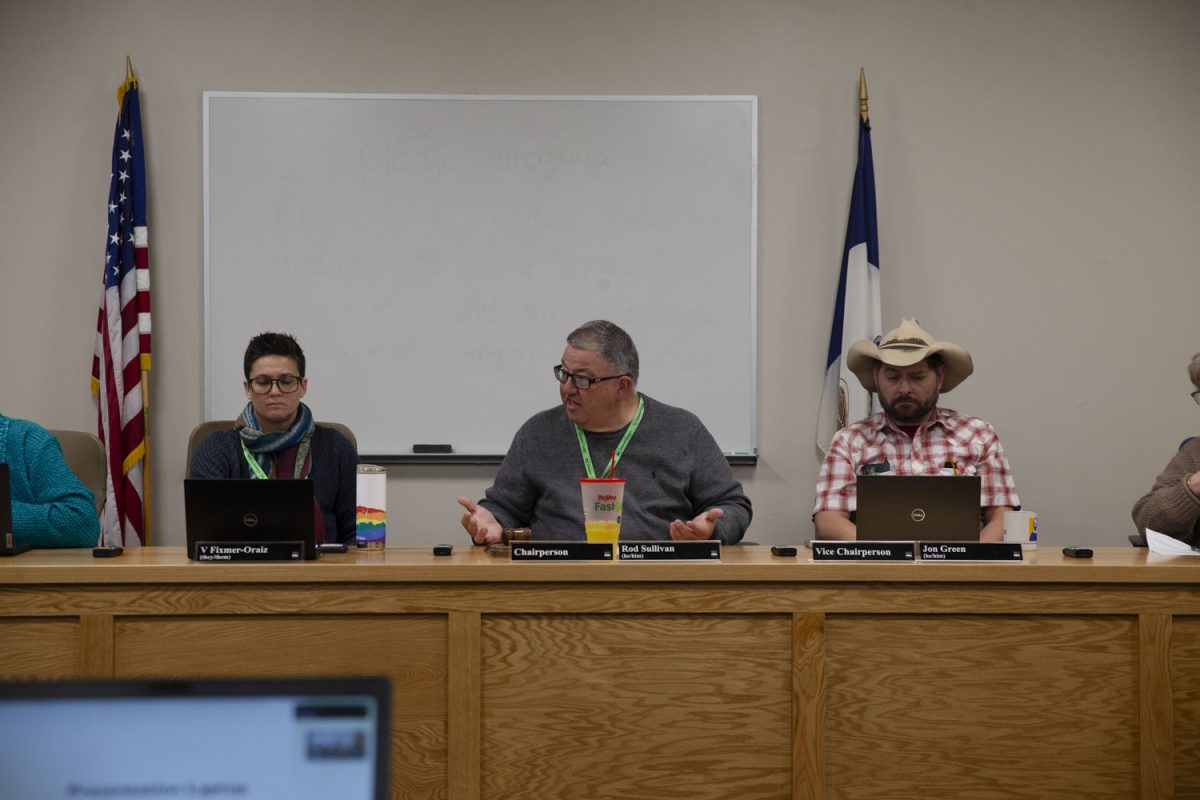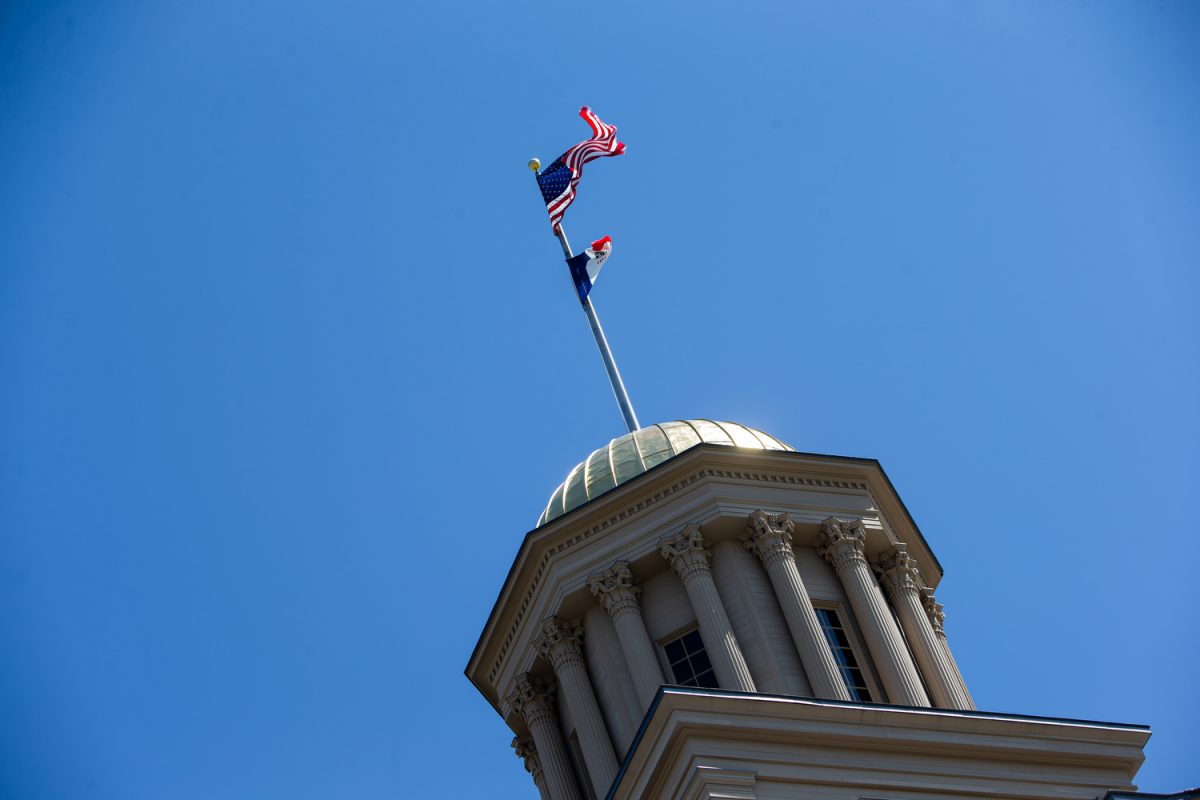Sarah Kunch has spent time researching many major topics, such as heart-rate variability in babies with diseases and carbon content in soils and how they contribute to global warming.
However, she has had to juggle her research with the normal demands of a high school student.
The Fort Madison senior’s love for science and research brought her to the University of Iowa on Thursday, where she formally presented her project to the 2013 Iowa Regional Junior Science and Humanities Symposium.
“I have no idea where I am taking my scientific research, but I know I will continue with it,” Kunch said.
The annual STEM symposium is coordinated by the UI Belin-Blank Center, which attempts to bring together the brightest high-school students in the state to discuss their passions and research.
Gov. Terry Branstad implemented the STEM [science, technology, engineering and mathematics] initiative in 2011.
“The U.S. aspired to dramatically improve achievement in science, technology, engineering, and mathematics,” said Jeffrey Weld, the executive director of Iowa Governor’s STEM Advisory Council.
Iowa is not alone in its pursuit of STEM-based education. Weld said 42 states currently have STEM initiatives in place.
There are six hubs, or regions, in Iowa, and each has its own programs. Last summer, 12 programs spawned statewide, which were scaled up from programs that had existed locally in the hubs.
“There are a new robotics club, energy-education workshops, a computer-program competition that allows students to develop cyber defense programs, and at the UI, there is a health-occupations program that connects professors with kids in Iowa to do research,” Weld said.
With technology an important in the world, many countries are competing to be No. 1, including the United States.
“I think the world is becoming more competitive, and that means we have to have a good education, especially in science, technology, engineering, and mathematics,” said UI physics/astronomy Professor Donald Gurnett, the keynote presenter at the symposium.
At this year’s symposium, some topics discussed ranged from binary-error correction to the physical effect and psychology of music.
“The symposium is for high-ability students, most of whom were discovered by a talent search,” said Rachelle Rich, a secretary at the Belin-Blank Center. “They are brought together to bring the work they do and share it with individuals who feel the same and share their interests.”
During the day, students presented their research and toured science and math labs around campus. The idea was to nurture ideas from younger intellects that will continue their interest in STEM programs and careers.
“If you don’t reach out to the students, they won’t develop their talent area,” said Susan Assouline, the director of Belin-Blank Center.
The importance of developing these students’ skills will affect their future immensely, whether they are developing new ideas for doctors or buying the products their classmates develop. Being educated about the products is vital on both ends, Weld said.
“Reasons for the goal are obvious, STEM courses and majors lead to careers that our overall integral to states economic future as well as quality lives,” he said. “Regardless of kids work in STEM careers, they are consumers, and STEM careers create many products that everyone buys.”






